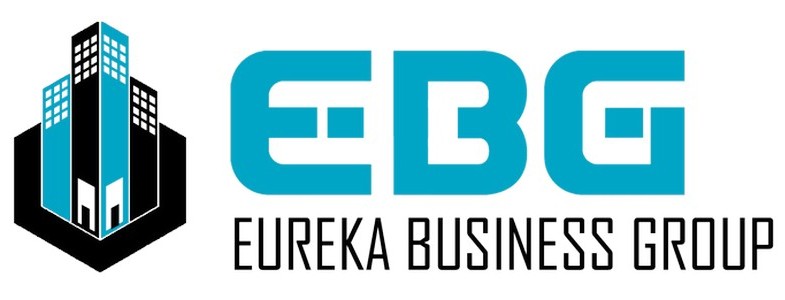- Home
- Industrial
- Industrial Investors Resources
- What New Investors Need to Know About Industrial Flex Properties!
What New Investors Need to Know About Industrial Flex Properties!
For new investors, understanding the nuances of different property types is essential to making informed decisions. One asset class that offers flexibility and high potential for returns is industrial flex properties. These versatile spaces are gaining popularity, especially as the needs of businesses continue to evolve. If you’re a new investor considering diving into the commercial real estate market, here’s what you need to know about industrial flex properties and why they might be a great addition to your portfolio.
What Are Industrial Flex Properties?
Industrial flex properties are a type of commercial real estate that offers a mix of office, warehouse, and sometimes retail spaces, all within the same building or complex. The term “flex” refers to the flexibility these properties provide—tenants can easily customize the space to fit their specific needs. For example, a business could allocate a portion of the property for office use while dedicating the rest to warehousing or manufacturing.
This versatility is particularly attractive to a variety of businesses, from e-commerce companies needing both administrative and storage spaces to manufacturers and distributors requiring room for production and operations.
Key Features of Industrial Flex Properties
Before you invest, it’s important to understand the key features that make industrial flex properties unique:
Versatility: The primary appeal of flex properties is their adaptability. Tenants can reconfigure the space based on their current needs without having to move to a new location or incur significant renovation costs.
Location: Flex properties are often located near major transportation hubs—close to highways, railroads, or airports. This makes them ideal for businesses that rely on logistics and distribution, as the proximity to these transport routes ensures faster and more efficient operations.
Mixed-Use Potential: The blend of office and industrial space opens the door to a variety of industries, from tech startups requiring office space to companies needing storage or light manufacturing areas.
Growth Potential: Because of their flexibility, these properties often attract growing businesses. A company might start with a small section of a flex building for office use, but as they grow, they can expand within the same space, reducing the need for relocation.
The Current Market for Industrial Flex Properties
Industrial flex properties are in high demand, largely driven by the rise of e-commerce, technology startups, and companies looking for cost-effective solutions. Traditional office space is often more expensive per square foot, while industrial warehouses lack the administrative setup that many businesses need. Flex properties bridge this gap, offering a cost-efficient and customizable option.
Additionally, the demand for last-mile logistics—the final step in the delivery process from a warehouse to a customer’s doorstep—has skyrocketed. Flex properties are ideally suited for this role, as they allow businesses to combine warehousing with office functions, improving delivery speed and efficiency. This trend is likely to continue, making industrial flex properties a potentially lucrative investment.
Key Benefits of Investing in Industrial Flex Properties
For new investors, the benefits of adding industrial flex properties to a portfolio are numerous. Here are the key reasons why they’re worth considering:
Steady Demand: As industries continue to evolve and new business models emerge, the demand for versatile, multi-use spaces will remain strong. This ensures a steady pool of potential tenants for flex properties.
Higher Occupancy Rates: Because these properties can serve a variety of industries, they tend to have higher occupancy rates compared to more specialized commercial properties like traditional office buildings or warehouses.
Cost-Effective for Tenants: Flex spaces are generally more affordable than leasing separate office and warehouse spaces. This cost-effectiveness makes flex properties an attractive option for small to medium-sized businesses, which often leads to longer tenant retention.
Adaptable to Market Shifts: Industrial flex properties can quickly adapt to changing market conditions. If there is an economic downturn, businesses can scale down their space usage without moving to a new location, making it easier for investors to retain tenants during tougher times.
Value Appreciation: Industrial properties have been shown to appreciate in value over time, especially in areas with increasing commercial activity. Flex properties, because of their multifunctionality, are particularly well-positioned to benefit from this trend.
Challenges to Consider
While investing in industrial flex properties offers numerous benefits, it’s important to consider potential challenges:
Tenant Turnover: Flex properties may have a higher tenant turnover rate compared to long-term leases in traditional office or retail spaces. Smaller businesses using these properties may outgrow the space or shift operations, leading to shorter lease terms.
Market Knowledge: Understanding the local market is crucial. The success of your investment will depend on factors like location, proximity to transportation hubs, and the specific needs of local businesses. As a new investor, conducting thorough market research or partnering with an experienced real estate professional is key to mitigating risk.
Capital Expenditures: While tenants have the flexibility to customize the space, investors might still need to make capital improvements or offer build-to-suit options to attract high-quality tenants. This requires upfront capital and could extend the time before you see significant returns.
How to Get Started as an Investor
If you’re ready to invest in industrial flex properties, here’s how to get started:
Do Your Research: Begin by learning about the local industrial real estate market. Look for areas where businesses are expanding, and pay attention to trends in logistics, manufacturing, and tech industries. Understanding the demand for flex properties in a specific region will help you make an informed decision.
Assess Your Finances: Flex properties often require a significant upfront investment, especially in hot markets. Ensure that you have enough capital or financing options in place to cover both the property purchase and any potential renovations or tenant improvements.
Work with Professionals: As a new investor, it’s important to partner with experienced professionals in commercial real estate. This might include brokers who specialize in industrial properties, property managers, and contractors who can help customize spaces for tenants.
Consider Long-Term Leases: When negotiating with tenants, aim for longer lease terms to reduce turnover and ensure stable cash flow. Many businesses prefer long-term arrangements because it allows them to grow within the space over time.
Monitor Industry Trends: Stay updated on trends in e-commerce, logistics, and technology, as these industries will continue to drive demand for industrial flex properties. Being proactive and adaptable to changing market conditions will help maximize your investment returns.
Conclusion
For new investors, industrial flex properties offer a dynamic, versatile, and potentially lucrative entry point into the commercial real estate market. With the rise of e-commerce, last-mile delivery, and the need for flexible workspaces, the demand for these properties is only expected to grow.
However, like any investment, it’s important to approach industrial flex properties with a clear understanding of both the benefits and potential challenges. By doing thorough research, partnering with experts, and keeping an eye on market trends, you can position yourself for success in this evolving and exciting sector.
Investing in industrial flex properties offers the opportunity for steady cash flow, capital appreciation, and a diverse tenant base. If you’re ready to take the plunge, this asset class could be a strong addition to your portfolio, combining flexibility with high growth potential in today’s ever-changing commercial landscape.



